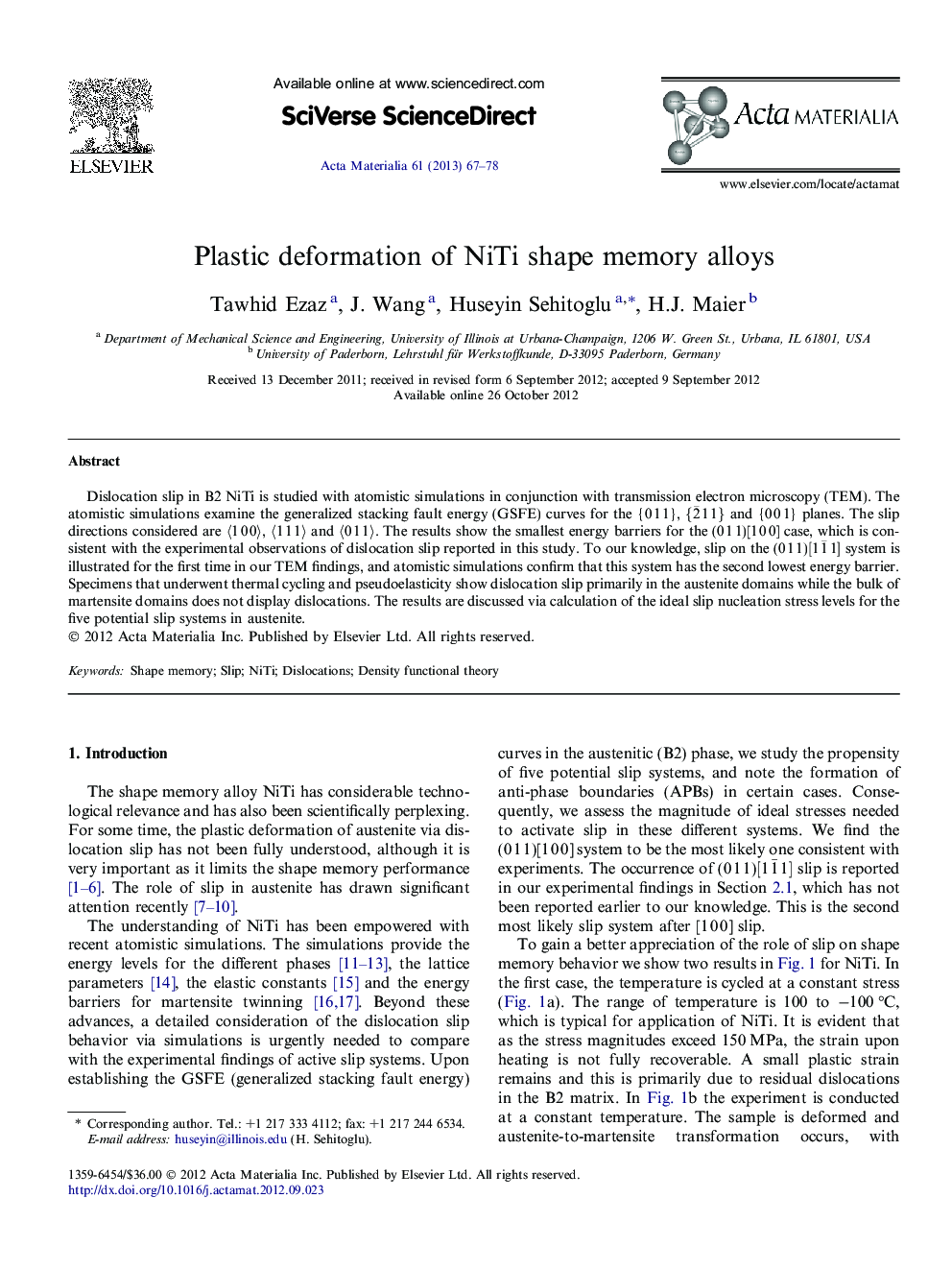| Article ID | Journal | Published Year | Pages | File Type |
|---|---|---|---|---|
| 10620308 | Acta Materialia | 2013 | 12 Pages |
Abstract
Dislocation slip in B2 NiTi is studied with atomistic simulations in conjunction with transmission electron microscopy (TEM). The atomistic simulations examine the generalized stacking fault energy (GSFE) curves for the {0 1 1}, {2¯11} and {0 0 1} planes. The slip directions considered are ã1 0 0ã, ã1 1 1ã and ã0 1 1ã. The results show the smallest energy barriers for the (0 1 1)[1 0 0] case, which is consistent with the experimental observations of dislocation slip reported in this study. To our knowledge, slip on the (0 1 1)[11¯1] system is illustrated for the first time in our TEM findings, and atomistic simulations confirm that this system has the second lowest energy barrier. Specimens that underwent thermal cycling and pseudoelasticity show dislocation slip primarily in the austenite domains while the bulk of martensite domains does not display dislocations. The results are discussed via calculation of the ideal slip nucleation stress levels for the five potential slip systems in austenite.
Related Topics
Physical Sciences and Engineering
Materials Science
Ceramics and Composites
Authors
Tawhid Ezaz, J. Wang, Huseyin Sehitoglu, H.J. Maier,
